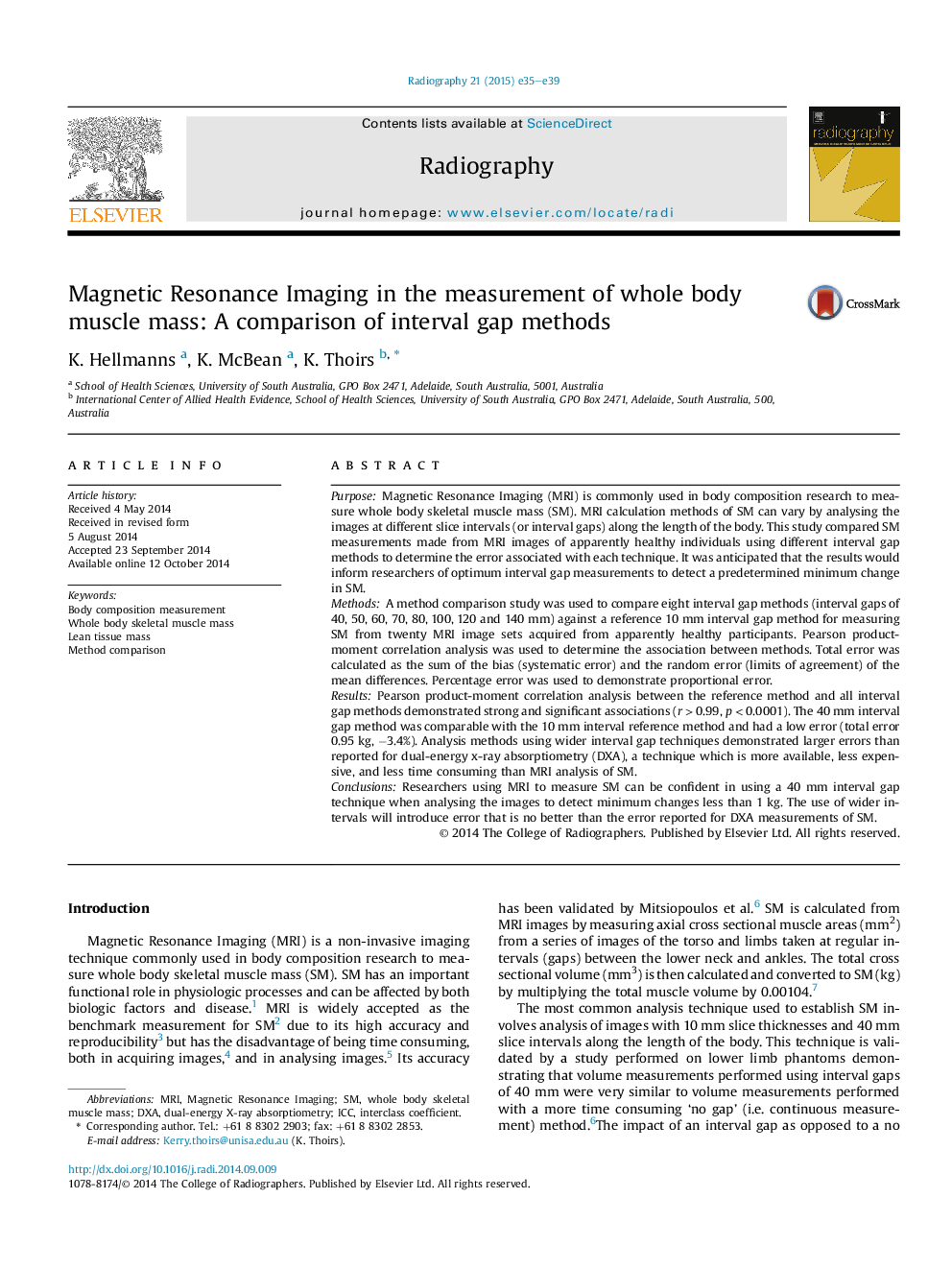| کد مقاله | کد نشریه | سال انتشار | مقاله انگلیسی | نسخه تمام متن |
|---|---|---|---|---|
| 2738375 | 1148178 | 2015 | 5 صفحه PDF | دانلود رایگان |
• MRI measures of SM using a 40 mm interval gap method are comparable a no gap method.
• The error associated with MRI measures of SM increases as the interval gap between images increases.
• This study informs researchers of error estimates when selecting MRI interval gaps to assess SM.
PurposeMagnetic Resonance Imaging (MRI) is commonly used in body composition research to measure whole body skeletal muscle mass (SM). MRI calculation methods of SM can vary by analysing the images at different slice intervals (or interval gaps) along the length of the body. This study compared SM measurements made from MRI images of apparently healthy individuals using different interval gap methods to determine the error associated with each technique. It was anticipated that the results would inform researchers of optimum interval gap measurements to detect a predetermined minimum change in SM.MethodsA method comparison study was used to compare eight interval gap methods (interval gaps of 40, 50, 60, 70, 80, 100, 120 and 140 mm) against a reference 10 mm interval gap method for measuring SM from twenty MRI image sets acquired from apparently healthy participants. Pearson product-moment correlation analysis was used to determine the association between methods. Total error was calculated as the sum of the bias (systematic error) and the random error (limits of agreement) of the mean differences. Percentage error was used to demonstrate proportional error.ResultsPearson product-moment correlation analysis between the reference method and all interval gap methods demonstrated strong and significant associations (r > 0.99, p < 0.0001). The 40 mm interval gap method was comparable with the 10 mm interval reference method and had a low error (total error 0.95 kg, −3.4%). Analysis methods using wider interval gap techniques demonstrated larger errors than reported for dual-energy x-ray absorptiometry (DXA), a technique which is more available, less expensive, and less time consuming than MRI analysis of SM.ConclusionsResearchers using MRI to measure SM can be confident in using a 40 mm interval gap technique when analysing the images to detect minimum changes less than 1 kg. The use of wider intervals will introduce error that is no better than the error reported for DXA measurements of SM.
Journal: Radiography - Volume 21, Issue 1, February 2015, Pages e35–e39
